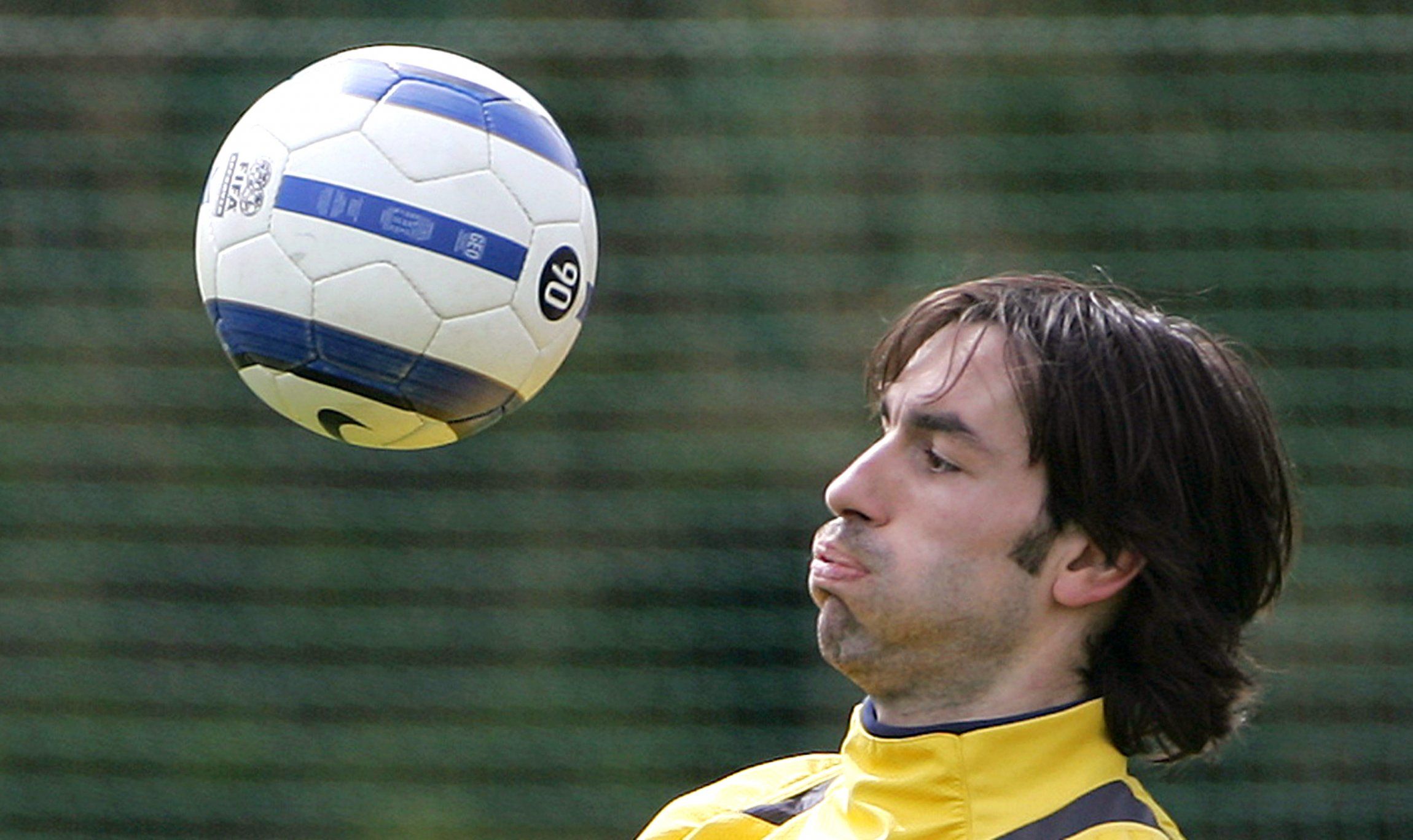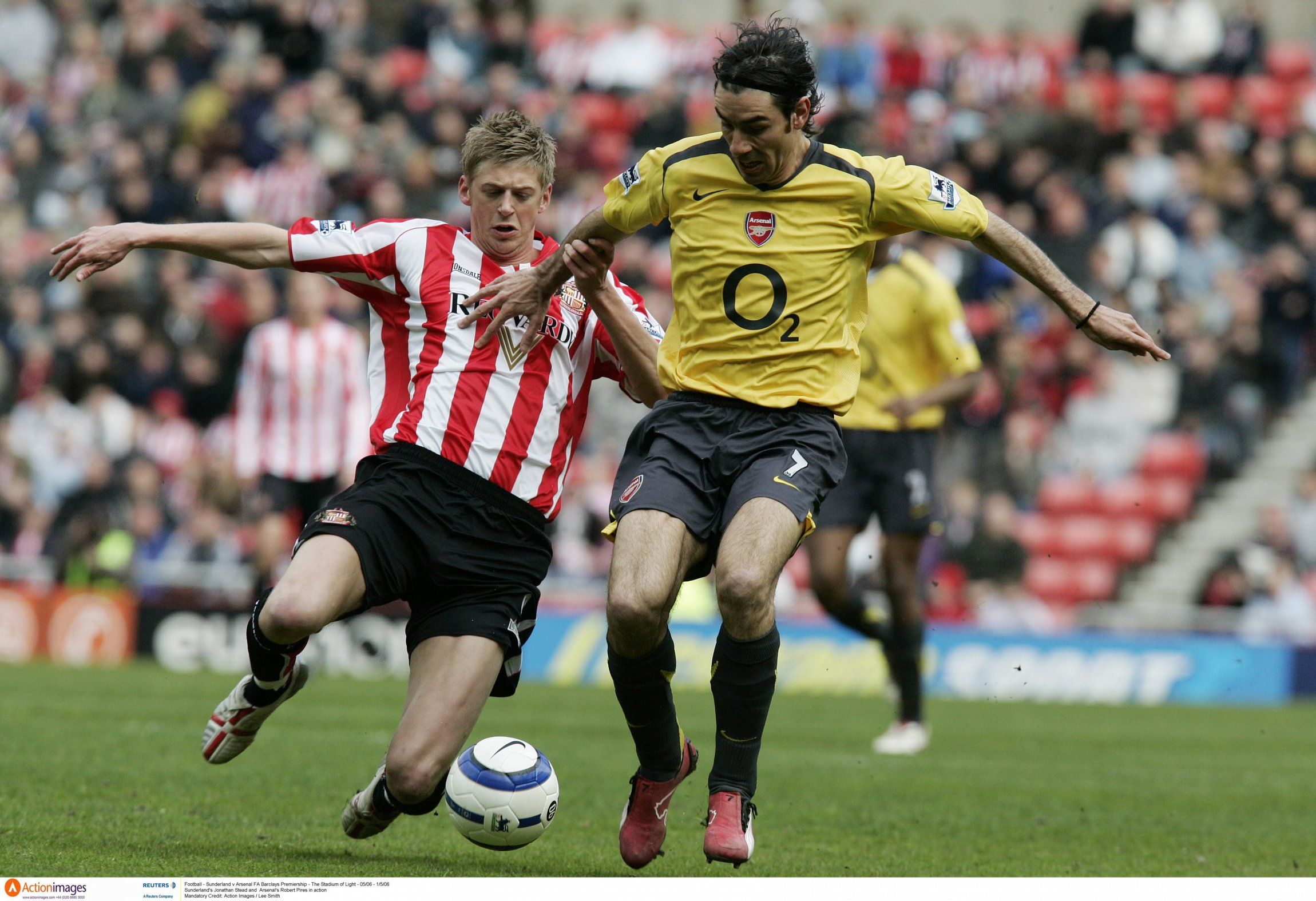Each week on Football FanCast we will be celebrating those special breed who lit up the Premier League with their unique brand of utter genius. This time out we pay homage to a Gallic maestro who refused to be categorised.
Putting your finger on what made Robert Pires so very different to other wingers is initially quite hard. He loved to dribble; oh boy did he love to dribble, mostly for gain but sometimes just for the sheer hell of it. For six aesthetically-pleasing years in north London the former Metz and Marseille baller twisted and turned and confounded to great effect. In that regard the Reims-born talent was a wideman-slash-showman pure and simple.
He also fired over inch-perfect deliveries on tap. Granted, in that thoroughly modern manner that we’ve all become accustomed to because we’re not talking here about floated crosses to the back post, or at least not many of them. Instead they would invariably be drilled, low, hard and usually accurate. They were essentially passes with a zing of chilli and a dash of cumin.
So he dribbled, crossed, and played predominantly out wide. Add these together and the maths tells us everything we need to know surely?
But then we come to his pace, or rather lack of it. Now Pires was hardly a slouch but neither was he capable of knocking the ball past a turning full-back and winning a foot-race. In those six years, that amounted to 189 appearances rarely did the Frenchman go from A to B with one heavy touch and a sprint. Instead he would slalom, play a one-two with C and use D as a decoy to glide into valuable space. This habit alone of course does not distance Pires from other craftsmen with touchline paint scuffed on the side of their boots because if it did that would be stereotyping all wingers as mere speed-merchants. And they’re not. But I feel we’re getting somewhere now. We’re getting closer.
The answer becomes apparent when clips are watched, clips of what reality TV hosts would call his best bits. There it becomes obvious as to why he always appeared unique from his contemporaries; why he looked for all the world like a number ten played out wide. Indeed the answer has already been divulged above.
It’s because he glided. He floated. He traversed the Highbury turf (Pires left Arsenal just two months prior to their move to the Emirates) like a lightly applied paintbrush. In his movement and in his touch he was elegant, chic.
Wingers may be many more things than simply portals of speed but what they’re not supposed to be is elegant. Because elegance gets you clattered out there in the badlands, a good distance from the referee’s gaze. It gets you hurt.
That Pires never was can partially be explained away by his predilection for falling to ground at the slightest of touches but also is a testament to his sheer, supernatural ability. Like Ginola his fellow countryman he dared to carve out a career playing with the sumptuousness of a Bergkamp but out in the hinterlands where pace and power is king. And for his nerve he was rewarded many times over, winning the World Cup, a Euro Championship, two FA Cups and a brace of league titles, the latter making him forever invincible. In 2008 he was voted the sixth best player to ever adorn an Arsenal shirt.
It takes balls to be a baller out wide. Pires made it look like a stroll down the Champs-Elysees.
The date is March 17th 2002. The setting is Villa Park. The Gunners are on course to secure their second Premier League title under Arsene Wenger and here they lead by a single goal. On a muddied pitch Freddie Ljungberg sweeps a speculative ball out to the left flank and Pires chases it down with George Boateng in close pursuit. The ball bounces once and high, so high in fact that by the time it drops the Villa midfielder believes he can nick it.
Pires however has other ideas. He loops the ball up and over his pursuer and readjusts his stance accordingly. Now he faces Peter Schmeichel – an aging beast but still with the presence of a legend – and the ball has sat up perfectly for a lob.
The chip, lob, dink, whatever you wish you call it is expertly executed. It has Schmeichel flailing, his arms not even bothering to extend because he knows instantly that he’s been beaten. This wonderful vignette is performed from close range. Only Pires – even in that extraordinary Arsenal side and with only the possible exception of Ljungberg – would have the audacity to try that.
It is impish. It is cheeky. It is everything you want to see when you pay a great deal of money to take in a game.



